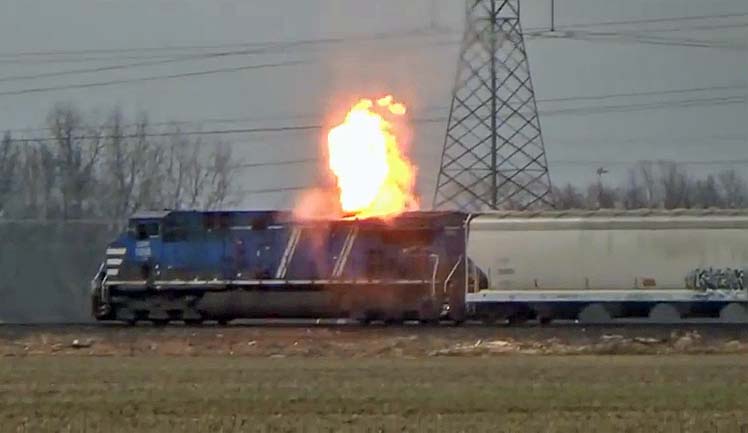
Tecumseh Ontario - No one was hurt in this incident.
It looks scary but this is what happens when the turbo blows is it allows crankcase oil (about 300 to 400 gallons) to be siphoned from the crankcase into the
combustion chambers with nothing to regulate the flow.
The engine goes into hyper drive, rotating over twice the maximum allowable limit of 1,000 rpm, running wild until it either consumes the oil in the crankcase,
seizes, or self destructs with a hail of shrapnel and hot gases flying in all directions.
There's nothing one can do to stop it, even cutting off the supply of diesel fuel won't shut it down.
The identical GE engine on a ship has to have a device called a "guillotine shutoff valve" in the air intake to the engine which will stop a
runaway from continuing once activated.
They are mandated by Coast Guard regulations but there is no such regulation for railway locomotives.
Interestingly, EMD 2-stroke diesel engines have an engine over speed device which causes all the exhaust valves in the engine to jam in the open position when
engine rpm exceeds design limits.
This prevents combustion chamber pressures from rising to the point where the oil scavenged from the crankcase will ignite.
Author unknown.
provisions in Section 29 of the Canadian
Copyright Modernization Act.


